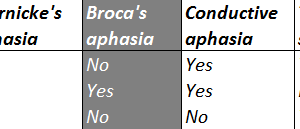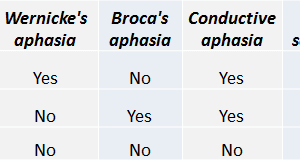Whether found as a result of carotid auscultation or as part of a stroke/TIA work up on the contralateral side, there are specific protocols for the treatment of asymptomatic carotid stenosis.
Screening for carotid artery stenosis
- The USPSTF (United States Preventive Services Task force) does NOT recommend routine screening for carotid artery disease in the general population.
- Multiple societies like the American Heart Association and American Stroke Association consider it reasonable for patients with known atheroscleotic disease like peripheral artery disease and coronary artery disease or 2 or more risk factors for atherosclerotic disease to be screened.
- Patients found to have a carotid bruit on physical exam should receive further evaluation
- Non-invasive screening methods include carotid duplex ultrasonography and MRA with both methods being essentially equivalent in terms of sensitivity and specificity
Goal of treatment: Primary stroke prevention
- Asymptomatic carotid artery stenosis of 75 percent or less carries a stroke risk of 1.3 percent annually.
- When stenosis is more than 75 percent, the combined rate for TIA and stroke is 10.5 percent per year, with most events occurring ipsilateral to the stenotic carotid artery. It is unclear how much of this increased risk can be attributed to carotid disease.
Medical management of carotid artery stenosis
- Statin to goal LDL <100 (prefer <70).
- Antiplatelet agent (aspirin is the first line agent).
- Manage atherosclerotic risk factors: smoking, hypertension, diabetes.
Surgical management of asymptomatic carotid artery stenosis
Carotid Endarterectomy (CEA)
- Data on benefit of CEA in asymptomatic carotid artery stenosis is conflicting. Many trials which showed benefit of CEA over medical management were done before the widespread use of statins.
- Patient’s age and comorbidities and the surgical risk contribute to the risk-benefit ratio.
- Current guidelines from multiple societies recommend considering CEA in asymptomatic patients with life expectancy of >10 years and carotid artery stenosis of >70% if the surgical risk of perioperative MI, stroke, and death is low (<3%).
Carotid Artery Stenting (CAS)
- Developed as an alternative to CEA, carotid stenting has failed to show any marked benefit in reducing surgical risks.
- Data from trials suggests that CAS and CEA are likely equivalent in stroke risk reduction and periprocedural risks in asymptomatic individuals. It should be noted that none of these trials compared CAS and CEA to medical management.
- Multi society guidelines recommend considering stenting for primary stroke prevention only in highly-selected patients.
Bottom line
Modern medical therapy that includes rigorous and compliant use of statins and antiplatelet agents, along with treatment of other atherosclerotic risk factors seems to have narrowed the gap between medical and surgical treatment of asymptomatic carotid disease for reducing the risk of stroke.
References:
- McCarron, Mark. M.D. etal. Screening for asymptomatic carotid artery stenosis. Uptodate.com.
- Biller, Jose. M.D. etal. When to Operate in carotid artery disease. Am Fam Physician. 2000 Jan 15;61(2):400-406.
- Goldstein, Larry. M.D etal. Guidelines for the primary prevention of stroke. Stroke. 2011; 42: 517-584.




